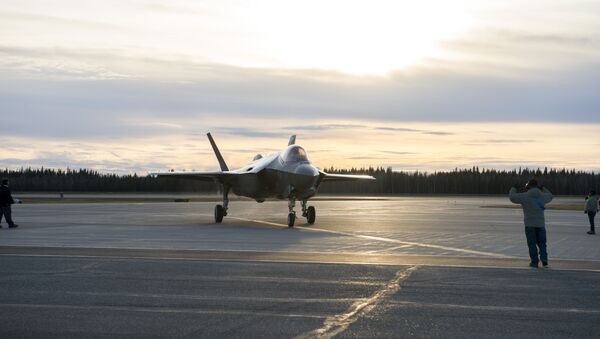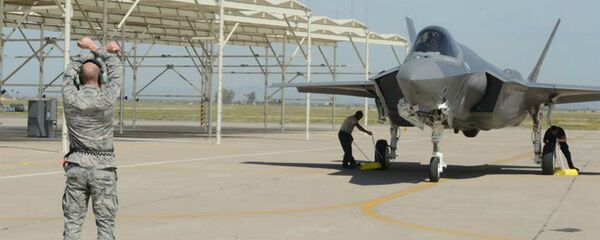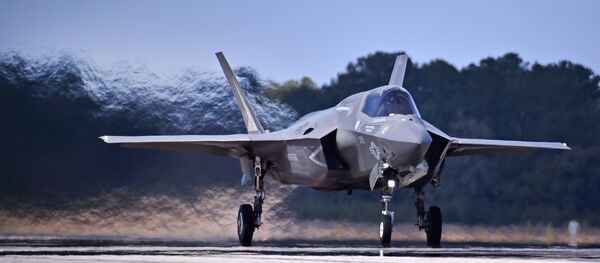By April 2020, Eielson Air Force Base in central Alaska will be the home of two US Air Force F-35A squadrons, including the pilots and aircraft support personnel, which will bring over 3,300 people to the Fairbanks metro area.
Fairbanks has shelled out half a billion dollars to expand housing in the area to accommodate the incoming squadrons, building some 974 new units — a big undertaking for a metro area of only 100,000.
The advanced aircraft, popularly known as the Joint Strike Fighter, has visited Eielson before, when the Arctic airstrip was used to test the plane's handling in icy conditions prior to a sale to Norway, Sputnik reported.
This time they're there to stay, though. The 54 planes will increase the base's personnel population by nearly 50% — quite a rebound for a base that just a few years ago was only narrowly saved from closure.
Eielson was spared from Base Realignment and Closure in 2005, when its complement of aircraft and mission were reduced to supporting the Red Flag-Alaska training exercises. Eielson is part of the Joint Pacific Alaska Range Complex (JPARC), a vast network of US military installations scattered across the state that are used for training personnel and testing a variety of equipment.
"We've had the training at Eielson Air Force Base with the 354th Fighter wing, in conjunction with the 168th wing of the Air National Guard," base commander Colonel Ben Bishop told the Alaska Republic last November. "But what's different is we're bringing F-35s, which actually have that combat projection."
Noting they'll continue to house "adversary support squadron and adversary aggressor squadrons" at the base, Bishop noted that with "two squadrons of F-22s down the road at the Anchorage Air Force base," US Forces Alaska now "provides an opportunity to provide for a fifth-generation center of excellence. So I really see tactics and our ability to project combat power is really gonna grow up in the skies of Alaska."
However, the Pentagon will have to upgrade its training systems in JPARC if it hopes to keep the anticipated F-35 squadrons up to date. Sputnik reported in April on a recent Department of Defense Inspector General's report that blasted JPARC's simulations of enemy equipment, which were so antiquated that F-22 and F-35 pilots training there couldn't detect them.
"The aircraft technology is more advanced than the range electronic warfare systems," the report states, and those range systems "do not replicate near-peer threats."
Pilots also lamented the range's unimaginative, stationary targets, which don't provide great training on deploying laser-guided weapons.
Nearby Clear Air Force Station will be competing for some of that airspace, though. On Sunday, the Fairbanks Daily News-Miner reported that changes in airspace restrictions would accompany the arrival of a new Long Range Discrimination Radar (LRDR) at the site, part of the Ground-Based Midcourse Defense system designed to detect and intercept ballistic missiles.
There's presently a 112-mile prohibition zone around Clear due to the powerful PAVE PAWS phased radar array, but that's expected to expand later this year in order to protect aircraft from the powerful radiation field generated by LRDR, AP reported Monday.
The blog Mostly Missile Defense estimated last month that the maximum range of the LRDR might be around 2,300 miles.
Construction of the LRDR array, another solid-state phased array, began in March as part of a $784.3 million contract the Pentagon awarded to Lockheed Martin — which also made the F-35 and F-22. The new radar should come online in 2020.





